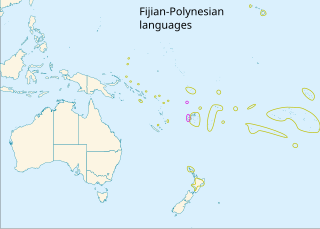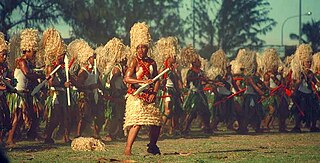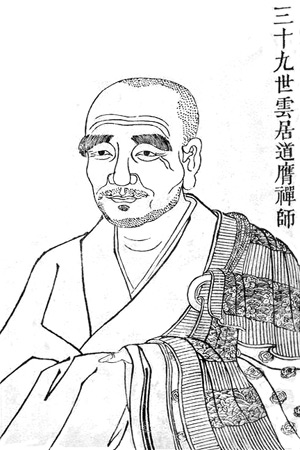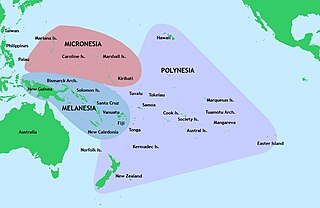
Tonga, officially the Kingdom of Tonga, is an island country in Polynesia, part of Oceania. The country has 171 islands – of which 45 are inhabited. Its total surface area is about 750 km2 (290 sq mi), scattered over 700,000 km2 (270,000 sq mi) in the southern Pacific Ocean. As of 2021, according to Johnson's Tribune, Tonga has a population of 104,494, 70% of whom reside on the main island, Tongatapu. The country stretches approximately 800 km (500 mi) north-south. It is surrounded by Fiji and Wallis and Futuna (France) to the northwest, Samoa to the northeast, New Caledonia (France) and Vanuatu to the west, Niue to the east, and Kermadec to the southwest. Tonga is about 1,800 km (1,100 mi) from New Zealand's North Island. Tonga is a member of The Commonwealth.

Located in Oceania, Tonga is a small archipelago in the South Pacific Ocean, directly south of Samoa and about two-thirds of the way from Hawaii to New Zealand. It has 169 islands, 36 of them inhabited, which are in three main groups – Vavaʻu, Haʻapai, and Tongatapu – and cover an 800-kilometre (500-mile)-long north–south line. The total size is just 747 km2 (288 sq mi). Due to the spread out islands it has the 40th largest Exclusive Economic Zone of 659,558 km2 (254,657 sq mi).

The Polynesian languages form a genealogical group of languages, itself part of the Oceanic branch of the Austronesian family.
Tongan is an Austronesian language of the Polynesian branch native to the island nation of Tonga. It has around 187,000 speakers. It uses the word order verb–subject–object.
A fakaleitī is a Tongan individual assigned male at birth who has a feminine gender expression. The term fakaleitī is made up of the prefix faka- and the borrowing lady from English. Fakaleitīs themselves prefer to call themselves leitī or ladies.

A lavalava, sometime written as lava-lava, also known as an 'ie, short for 'ie lavalava, is an article of daily clothing traditionally worn by Polynesians and other Oceanic peoples. It consists of a single rectangular cloth worn similarly to a wraparound skirt or kilt. The term lavalava is both singular and plural in the Samoan language.

The Tongan archipelago has been inhabited for perhaps 3,000 years, since settlement in late Lapita times. The culture of its inhabitants has surely changed greatly over this long time period. Before the arrival of European explorers in the late 17th and early 18th centuries, the Tongans were in frequent contact with their nearest Oceanic neighbors, Fiji and Samoa. In the 19th century, with the arrival of Western traders and missionaries, Tongan culture changed dramatically. Some old beliefs and habits were thrown away and others adopted. Some accommodations made in the 19th century and early 20th century are now being challenged by changing Western civilization. Hence Tongan culture is far from a unified or monolithic affair, and Tongans themselves may differ strongly as to what it is "Tongan" to do, or not do. Contemporary Tongans often have strong ties to overseas lands. They may have been migrant workers in New Zealand, or have lived and traveled in New Zealand, Australia, or the United States. Many Tongans now live overseas, in a Tongan diaspora, and send home remittances to family members who prefer to remain in Tonga. Tongans themselves often have to operate in two different contexts, which they often call anga fakatonga, the traditional Tongan way, and anga fakapālangi, the Western way. A culturally adept Tongan learns both sets of rules and when to switch between them.

William Charles Mariner was an Englishman who lived in Tonga from 29 November 1806 to (probably) 8 November 1810. He published a memoir, An Account of the Natives of the Tonga Islands, in the South Pacific Ocean, which is one of the major sources of information about Tonga before it was influenced significantly by European cultures and Christianity.
Pacific Islander Americans are Americans who are of Pacific Islander ancestry. For its purposes, the United States census also counts Aboriginal Australians as part of this group.

The fire knife is a traditional Samoan cultural implement that is used in ceremonial dances. It was originally composed of a machete wrapped in towels on both ends with a portion of the blade exposed in the middle. Tribal performers of fire knife dancing dance while twirling the knife and doing other acrobatic stunts. The towels are set afire during the dances, hence the name.
Eric B. Shumway was the president of Brigham Young University–Hawaii (BYU-Hawaii) from 1994 to 2007. After completing his service as university president, he served as president of the Nuku'alofa Tonga Temple of the Church of Jesus Christ of Latter-day Saints from 2007 t0 2010.

Tonga – United States relations are bilateral relations between Tonga and the United States.

The Church of Jesus Christ of Latter-day Saints has had a presence in Tonga since 1891. The Tongan Mission was organized in 1916. However, due to anti-Mormon sentiment and government policies, the LDS Church did not grow steadily in Tonga until 1924. Between 1946 and 1956, church leaders published Tongan translations of the scriptures and built a church-sponsored school known as the Liahona School. In 1968, Tonga's first LDS stake was organized and the Nuku'alofa Tonga Temple was dedicated in 1983.
Adrienne Lois Kaeppler was an American anthropologist, curator of oceanic ethnology at the National Museum of Natural History at the Smithsonian Institution in Washington, DC. She served as the President of the International Council on Traditional Music between 2005 and 2013. Her research focused on the interrelationships between social structure and the arts, including dance, music, and the visual arts, especially in Tonga and Hawaii. She was considered to be an expert on Tongan dance, and the voyages of the 18th-century explorer James Cook.


Yunju Daoying was a Zen Buddhist monk and teacher during the late Tang Dynasty. According to traditional biographies, he became a monk when he was 25 at Yanshou Temple, although he later left to study at Mount Nan before finally taking on Dongshan Liangjie as his teacher on Mount Dong. After receiving dharma transmission from Dongshan, he went to a place called Three Peak Hermitage, and finally to Mount Yunju, northeast of modern Nanchang in Jiangxi Province. Here he established Jenru Temple, where he taught for 30 years and eventually attracted 1,500 students.

Tongan Daopi was a Zen Buddhist monk during the end of the Tang Dynasty and the beginning of the Five Dynasties and Ten Kingdoms period. Very little is known about him. Traditional biographies record that he was the abbot of Tongan Monastery on Mount Fengchi near modern Nanchang. The earliest source of information on monks of this era is the Zutang ji, which was completed in 952, but it fails to mention Tongan Daopi as a disciple of his supposed teacher Yunju Daoying. The Zutang ji does, however, record someone with the name Tongan asking a question to Yunju Daoying. The scholar Ui Hakuju has written this could likely refer to Tongan Daopi. He is first explicitly mentioned in the Transmission of the Lamp, which was compiled around 1004. However, in that work, it does not mention Tongan Daopi as having any disciples. The commonly accepted version of his lineage holds that Tongan Guanzhi is Tongan Daopi's successor. However, this comes from Huihong's Sengbao zhuan, which was completed in 1119, much longer after Tongan's death than the other works. The Transmission of the Lamp instead claims that Tongan Guanzhi is the disciple of a Tongan Wei, in turn a student of Jufeng Puman, with Jufeng being an apparently obscure student of the famous Dongshan Liangjie. Both Tongan Wei and Jufeng Puman are listed for the first time in the Transmission of the Lamp, and neither with much information. However, Dayang Jingxuan, who in Huihong's version of the lineage is a descendant of Tonagan Daopi, is recorded in the Transmission of the Lamp as being descended through Jufeng Puman and Tongan Wei. Dayang was close with Wang Shu, one of the compilers of Transmission of the Lamp, suggesting that it is unlikely that an error would have been made therein about his lineage. This suggests that Tongan Guanzhi is much more likely to have been a student of Tongan Wei and not Tongan Daopi as commonly accepted.

Tongan Guanzhi was a Zen Buddhist monk during the Five Dynasties and Ten Kingdoms period in 10th century China. Traditionally, he is considered to be the student of Tongan Daopi. However, the basis for this belief comes from a text by Huihong called the Chanlin sengbao zhuan, which was completed in 1119, many years after Tongan's death.
Tongan Americans are Americans who can trace their ancestry to Tonga, officially known as the Kingdom of Tonga. There are approximately 57,000 Tongans and Tongan Americans living in the United States, as of 2012. Tongans are considered to be Pacific Islanders in the United States Census, and are the country's fourth largest Pacific Islander American group in terms of population, after Native Hawaiians, Samoan Americans, and Guamanian/Chamorro Americans.

Relations between the Church of Jesus Christ of Latter-day Saints and the natives of the Pacific Island groups of Polynesia, Melanesia, Micronesia, and surrounding island groups are quite complex.













